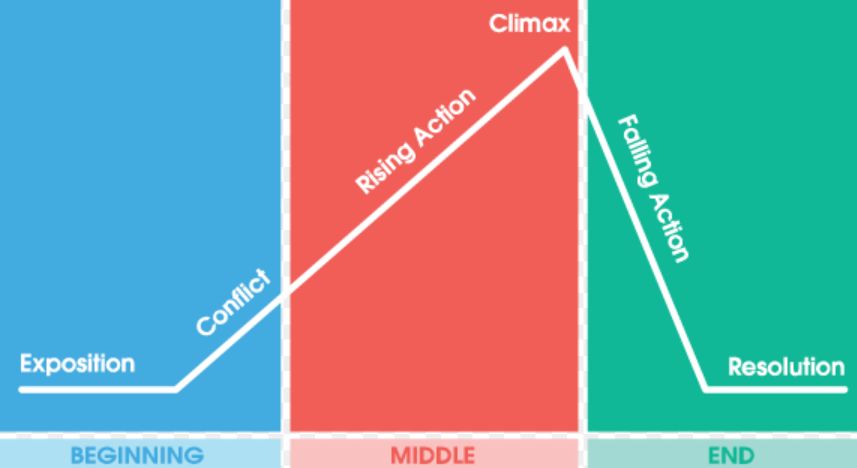Components Of A Story
Mar 07, 2019 • 774 views
The short story is a work of fiction that is usually written in narrative prose. It is often pointed than longer works of fiction, such as novels or epics. Short story writers use a combination of creative imagination, personal expression & language skills to create a story. Some of the essential elements of short story are given below:
·Plot
·Conflict
·Title
·Style
·Characters
·Themes
·Setting
·Point of View
Plot
Every story has a plot. It is the series of incidents, interrelated to each other to make up a story. Thus, a plot is logical progression of events: having a beginning, an intermediate & an end. A short story usually has one plot so that it can be read in one sitting. The five vital elements of plot are:

·Introduction: It gives a beginning of the story, where character are introduced & settings are revealed, also termed as exposition.
·Rising Action: The events between introduction & climax; conflicts are revealed in this part of the story.
·Climax: It marks the peak of interest & the turning point of the story. Both the casual events & the climax can be physical, mental or emotional. The climax makers the readers anticipate how the events turn out to be- whether the conflict will resolve or not?
·Falling Action: It refers to events between climax & denouement. Here the story begins to resolve & complications are slowly progressing towards solutions.
·Denouement: This is the part where story untangles
Conflict
An essential component of the plot, force acting opposite to the binding incidents to one another; it doesn’t necessarily have to be an open argument but occurs in the form of opposition that the main character must face in the story. Within a short story, there may be only one central conflict, or there may be one central conflict with many minor ones.
Based on Origin:
oExternal: The physical struggle, it represents circumstantial conflict
oInternal: Psychological, emotional or mental struggle where the character must take a decision, resist temptations, feel pain, etc.
Based on its Working Aspects:
oMan vs. Man: When the main character suffers due to physical strength against another character (man & animal, tragedy by natural causes)
Example: The Tiger in the Tunnel by Ruskin Bond, the watchman fights the man-eater tiger.
oMan vs. Circumstances: When destiny or fate or consequences of action becomes huge tussle for the character.
Example: The Bet by Anton Chekhov, struggle is against the circumstance created by the character himself.
oMan vs. Society: The leading character scuffles against stereotypical norms & “what will people say?” approach; as well as living conditions.
Example: Hunger by Narisa Sharma, poverty & hunger are main issues.
oMan vs. Himself: The leading character struggles with his own subconscious idea.
Example: The Last Leaf by O. Henry, Johnsy suffers cause of her own fear of death.
Title
The title of a story is mostly name of the protagonist or any phrase the has a special metaphorical meaning within the story. A title may sometimes com from the existing work or a memorable line itself, can relate to the authors style & humour.
Style
Every Author has his/her own unique style. The regular beginning that sets the tone of the story. Descriptive & narrative details are mingled with dialogues & they make the story lively with literary expressions. The prose used in narration is the language of as well as of feelings.
